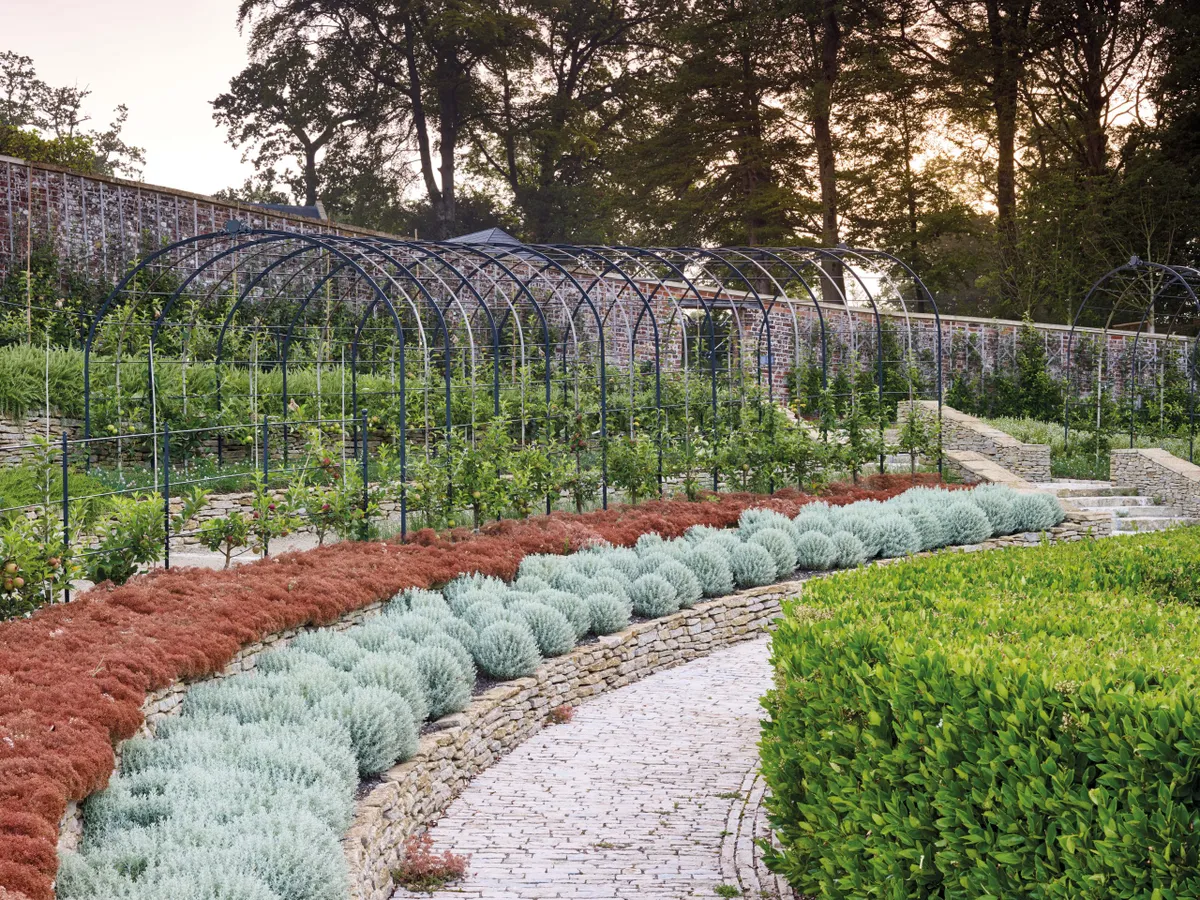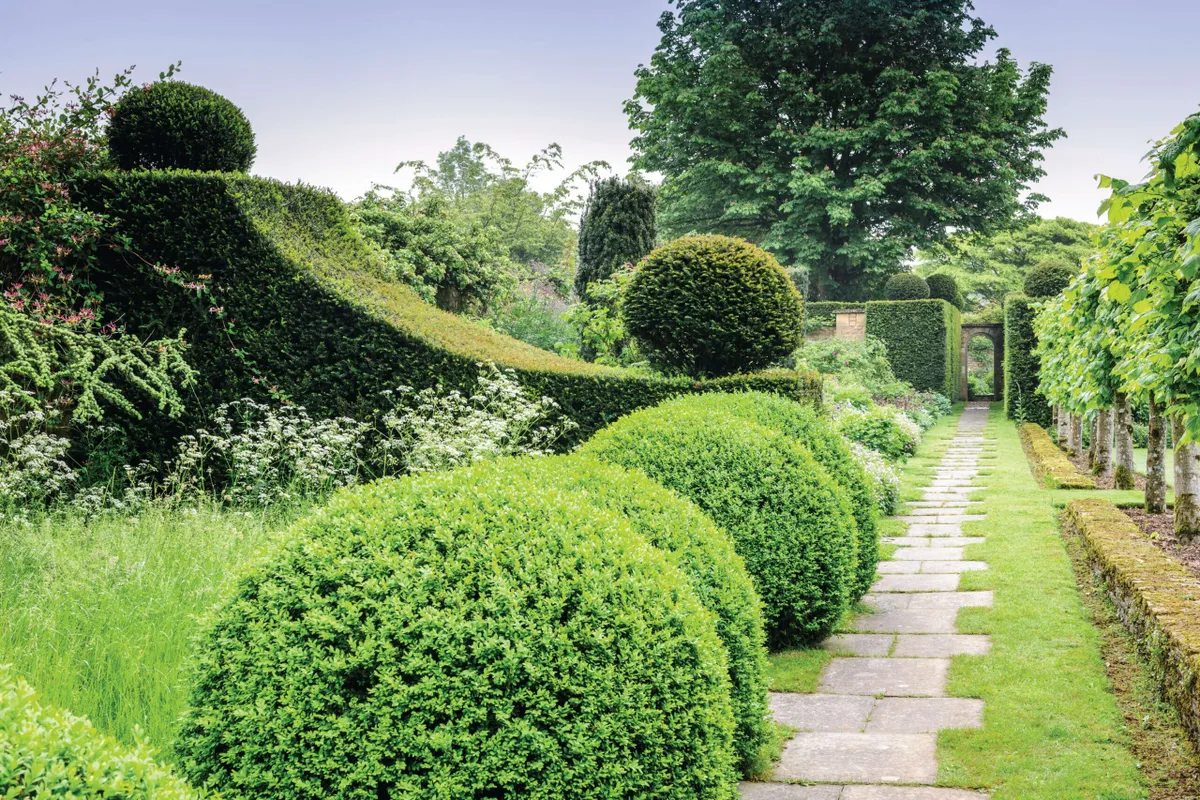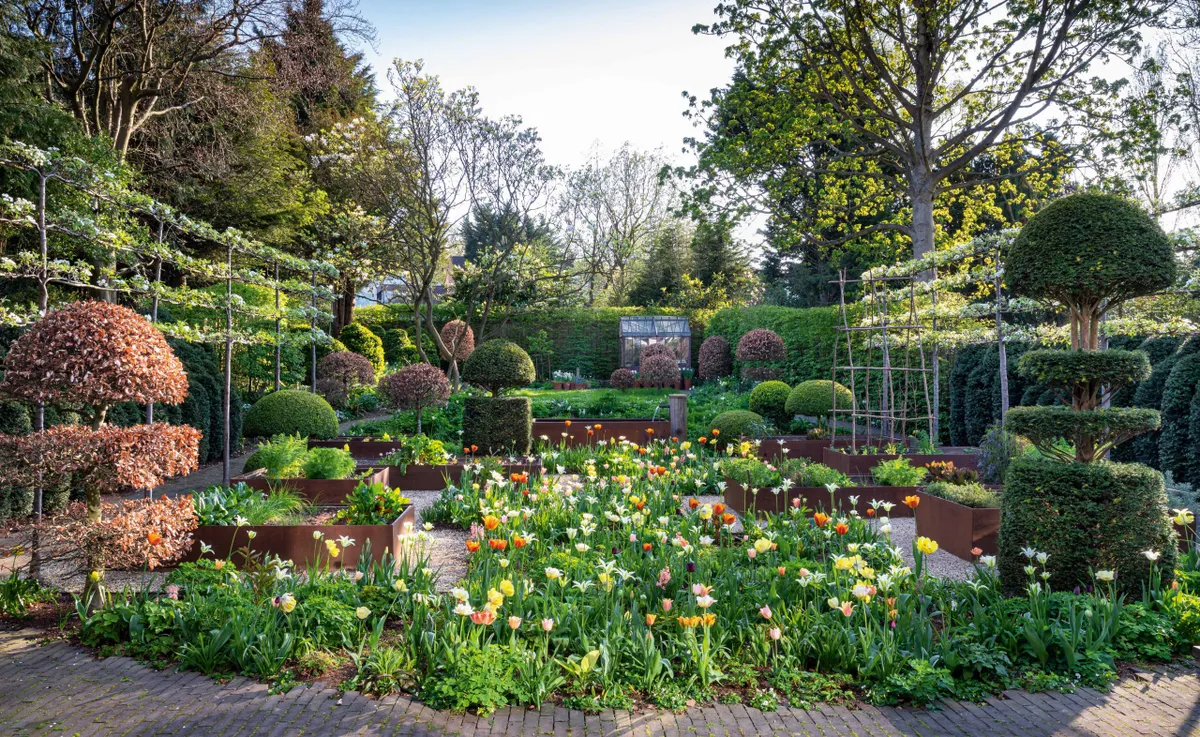We live in a densely populated world where the desire for privacy is greater than ever. Sometimes it is impossible to completely screen the garden off from the outside world, so be realistic about what is achievable. Simply surrounding the garden with fortress-like walls is not necessarily the answer, as there are height restrictions on boundary fences and walls. It is wise to consult your local council’s planning department to find out exactly what restrictions apply in your area.
What to consider with boundaries and screening
Even before considering styles and materials, there are certain legal matters that must also be considered. In most locations, fence and wall heights are limited to a maximum height of 1.8m. Anything rising above this height needs planning permission. Boundaries to public roads and footpaths, especially those in front gardens, may be restricted to only 1.2m in height. Heights of boundary walls should be checked with your local authority planning office.
Here's more garden screening ideas
Owners of listed buildings, or buildings of special interest, may be limited further in terms of the range of materials and styles that can be used. The same regulations may also apply if you live within a conservation area or a restricted zone such as a National Park, or there may be other restrictive covenants, such as a ‘hedge only and no fence’ rule. It is always best to check with your local planning authority as site-specific restrictions may apply to your property. Alongside a public highway, there are additional safety considerations relating to the materials used. Walls and fences that do not comply with regulations may be condemned and demolished.

The construction of walls along a shared boundary may require a party wall agreement with your neighbour, especially if the construction is close to buildings or other structures such as terraces or pools. This can be particularly significant in city or town gardens in which tight spaces are often surrounded by other buildings. Always consider the impact of your decisions on your neighbours and discuss your intentions with them. You may also find that changes of level between you and your neighbours can make construction more difficult.
Using hedges as boundaries and screens
Hedges have no height restrictions; however, there is a system in place whereby neighbours can register complaints if they believe a ‘high hedge’ is affecting the enjoyment of their home or garden. So, when planning a hedge it is extremely important you think about the growth rate and the care that is needed to keep it in good order. You are responsible for the care of your hedge and action can be taken against you if your hedge is more than 2m in height and deemed to be a nuisance.

If the boundaries don’t provide you with enough seclusion, why not consider screening off an area within the garden? A well-positioned tree, especially an evergreen such as Eriobotrya japonica, could offer sufficient cover. An arbour or pergola covered with climbers can provide just the right amount of covering for a table and chairs. If space allows, you could plant some internal hedges to create a ‘room’.
Pleached trees are a very popular way of making a vertical, elevated hedge; alternatively, trees such as Platanus x hispanica can be trained horizontally to create an umbrella-like canopy providing shade and privacy. Mature pleached trees can be expensive, but do achieve an instant effect.
Using fences and walls as boundaries
Should you be looking for protection from exposure, the lightweight larch lap panels beloved of DIY centres will not last long. They tend to catch the wind and blow over, whereas trellis or a semi-permeable, timber-board fence (with gaps between the boards) will reduce wind speed and last longer.
For structures with a longer life expectancy, the normal solution is a wall. Walls need a solid strip foundation below ground level; the norm is to use poured concrete for strength and stability. The excavation required must be considered carefully as it can have an impact on existing planting. Long walls need bracing in some way and often piers at intervals of 2m or so are used to give the required strength and wind resistance. The piers may include steel reinforcement tied into the foundations to provide extra strength for taller structures.

Modern walls can include the reinforcement within the overall structure, dispensing with the need for piers and creating a more elegant structure. However, temperature changes along the length of the wall can cause cracking and slippage. Narrow gaps, called expansion joints, should be included within the construction to allow for movement. This is also why free-standing walls should never be linked or tied into the structural walls of a house, as each will heat or cool at differing rates.
Damp is a further concern. Rainfall can penetrate and weaken or stain a new wall, damaging its appearance and reducing its life expectancy. Moisture from the ground can rise through the structure to similar effect. A coping of dense or protective material is required along the top of the wall – stone, slate, concrete or engineering bricks can all be used. Slate, engineering brick or a bituminous strip (known as a damp-proof course) can be used just above ground level to prevent rising damp.
Fences provide a less costly solution for longer stretches of boundary and where planting needs to be protected. Supporting posts are placed at regular intervals and each has its own foundation. The posts support rails, or cross members, which in turn hold individual boards or vertical strips, often called close-board fencing. Normally fences are constructed in timber. Hardwood is recognised as the strongest timber and is able to withstand rotting for many years. Softwoods are cheaper but require a preservative treatment such as ‘tanalising’ to protect them.
Here's how to design your garden
Discover great examples of boundaries and screening in garden design below